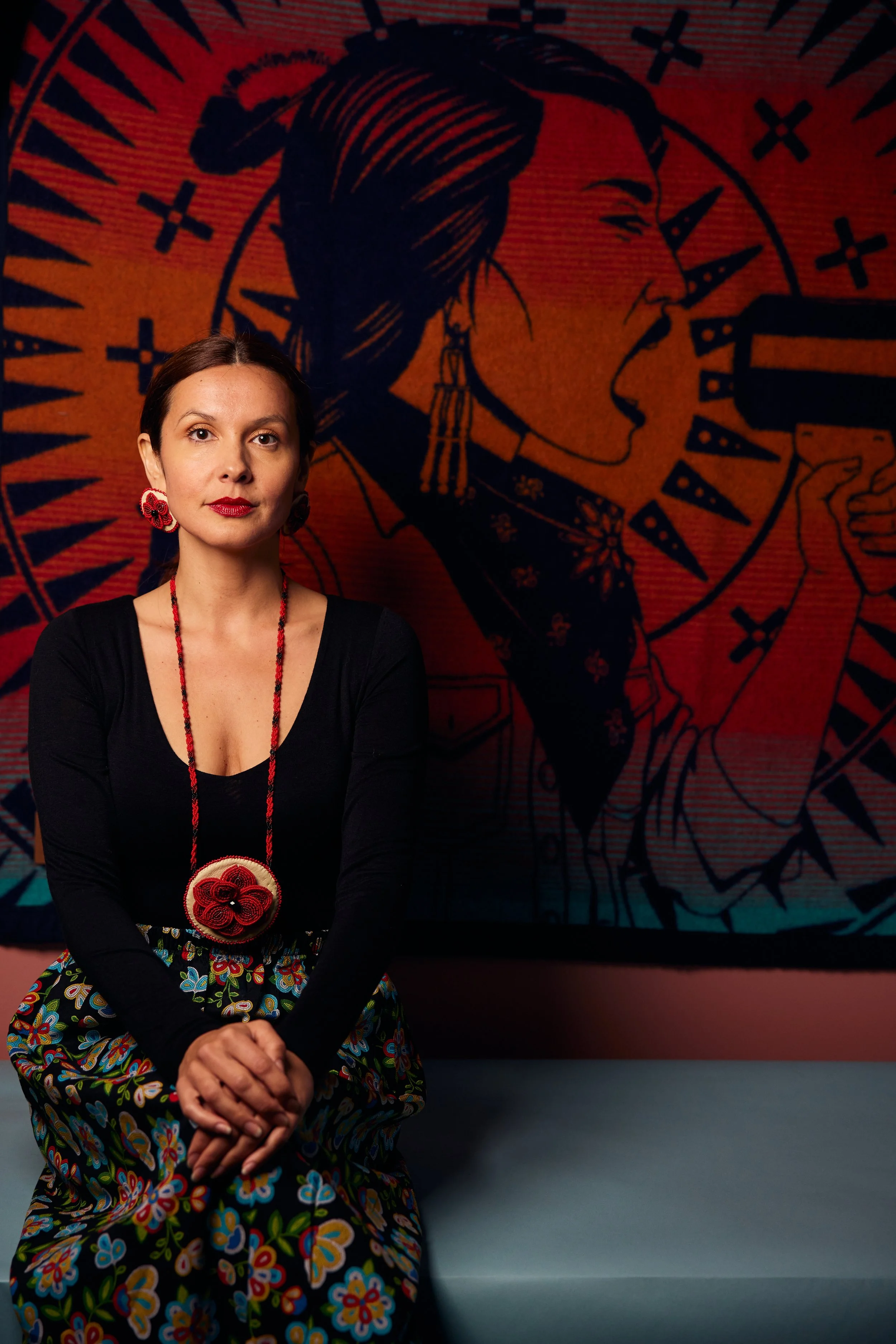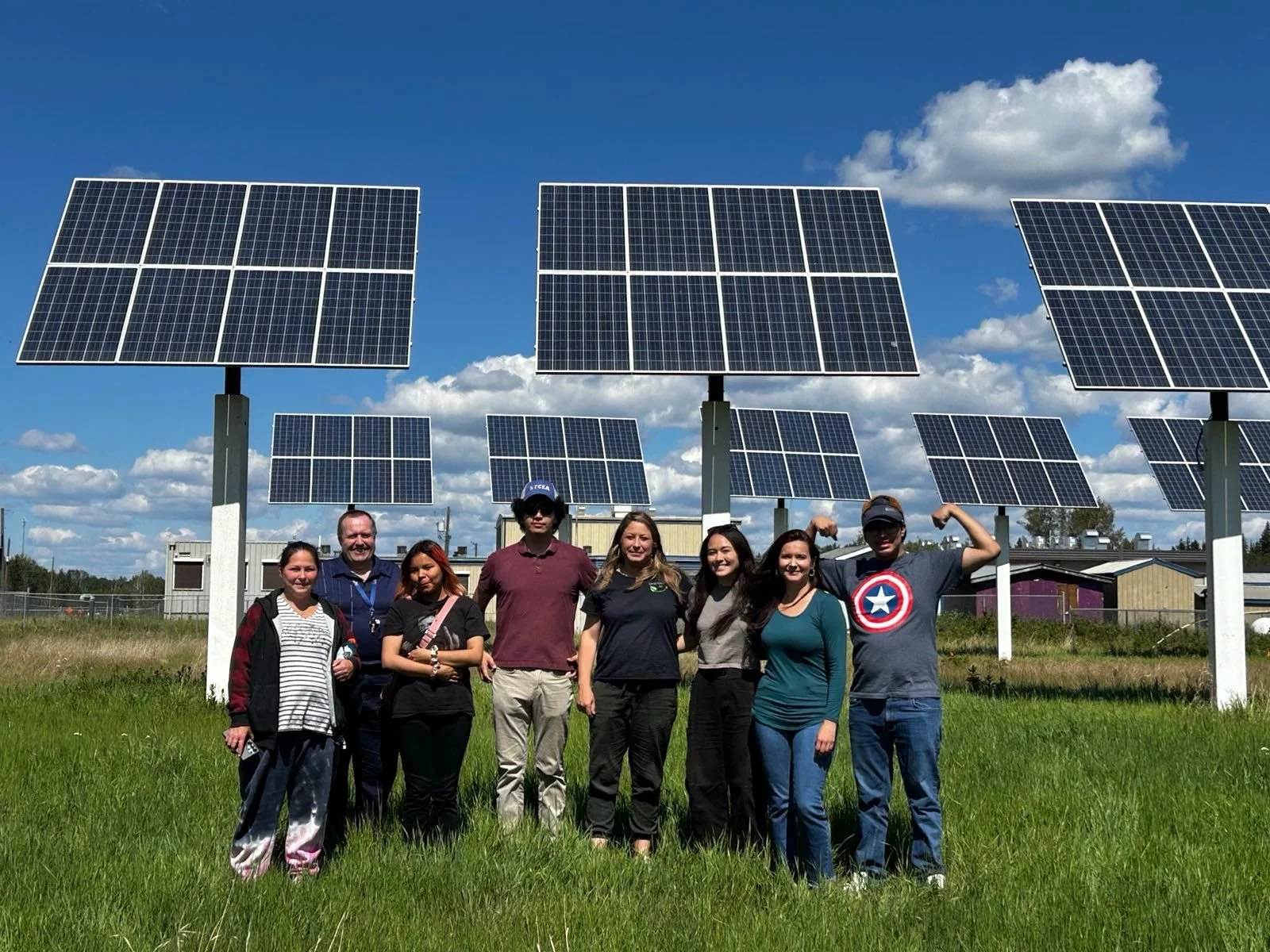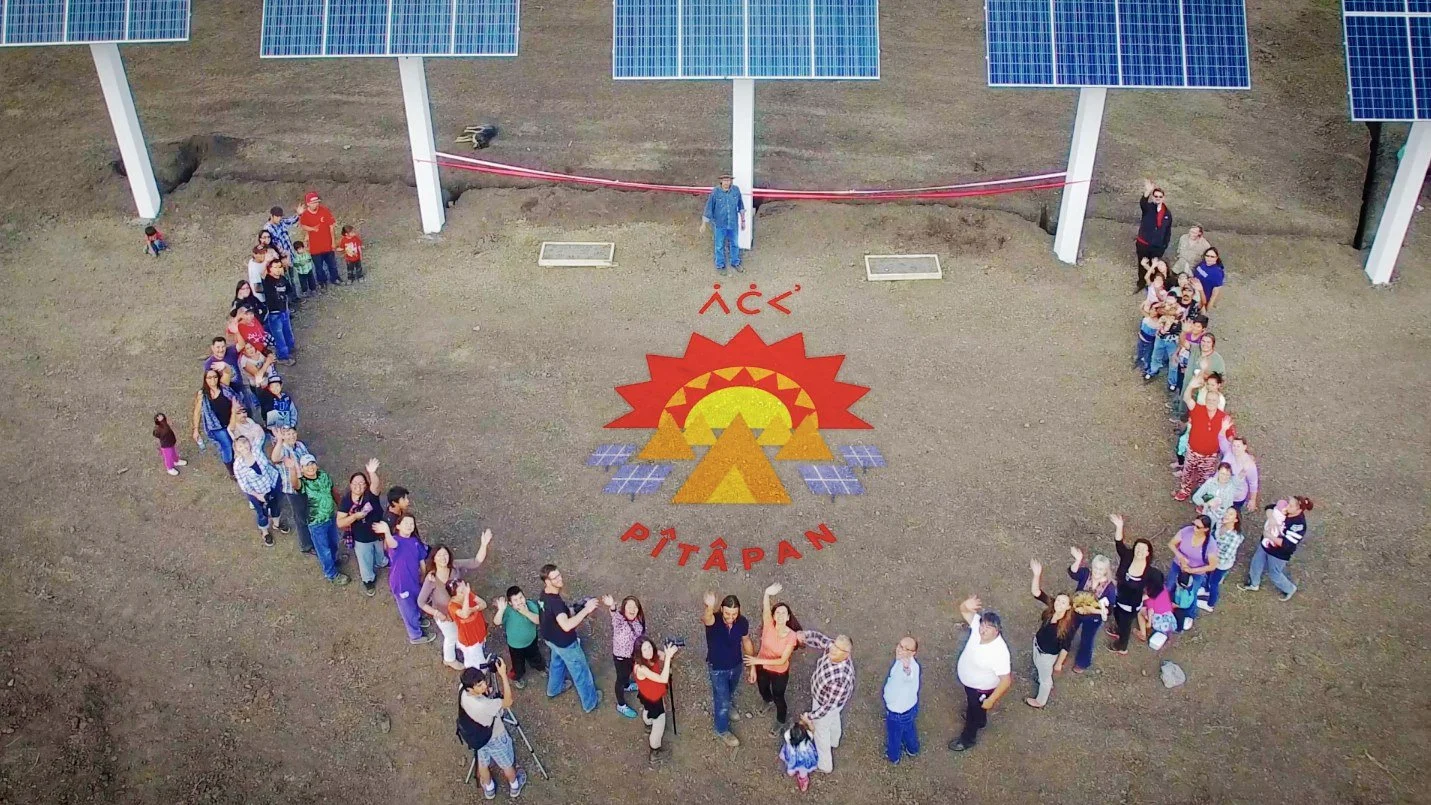Melina Laboucan-Massimo
… is building a powerhouse organization at the intersection of Indigenous energy sovereignty and cultural revitalization.
“We need to do more to help people implement climate solutions. You can only talk so much. We need to be in implementation phases, and we’re so behind” says Melina Laboucan- Massimo. The drive to scale Indigenous-led clean energy projects, and use them to build community capacity, independence and cultural resilience has been the force behind Melina’s work for over two decades.
Throughout that time, Laboucan-Massimo, who is Lubicon Cree, has established herself as a key leader in the sector: she is a co-founder of Indigenous Climate Action (ICA), with Eriel Deranger; spent eight years on the national executive steering committee for Indigenous Clean Energy (ICE); hosted a 13-episode TV documentary series on Indigenous clean energy projects across Turtle Island; completed her Master’s degree in Indigenous Governance and Energy Transition; has shaped sector policy with the Alberta and Federal government; led ground implementation of multiple clean energy projects; and has given hundreds of speeches and interviews about the importance of this work. Today, Melina is turning her energy back towards her own organization, Sacred Earth, which she founded in 2015. That work is unfolding through four distinct pillars:
First, Sacred Earth is democratizing access to clean energy in Indigenous communities. In-person training programs like ICE’s 20/20 Catalysts are limited in how many participants they can welcome per year. Government funding is massively oversubscribed, and favours larger projects. Sacred Earth Solar is helping to meet the huge gap in between by bringing training and guidance around clean energy projects directly into Indigenous communities. Their Just Transition Guide, which provides step-by-step guidance on project development and funding, has been downloaded over 12,000 times. Now, they’re transforming the guide into programs that can be delivered live in community in the form of climate and energy literacy education, and also through online training with cohorts of co-learners, then eventually as an asynchronous platform where people can learn at their own pace – expanding clean energy training and capacity into hundreds of Indigenous communities.
Sacred Earth is also leading solar installations in communities where clean energy can advance cultural revitalization efforts, land protection, and Indigenous self-determination. In Six Nations, they helped solarize the Sour Springs Long House and cookhouse used for on-the-land ceremonies; at the Gidimt’en checkpoint in Wet’suwet’en Territory and in Ada’itsx/Fairy Creek, they solarized installations used to support community land defense against pipelines and ancient forest logging. They have also worked with the Onaman Collective led by Christi Belcourt and Issac Murdoch, to solarize a language revitalization and art studio, and No More Silence to solarize a healing lodge, both in Ontario. After implanting the Piitapan solar project in Little Buffalo, Alberta - Sacred Earth is now supporting a larger 1.5 MW solar project with the Lubicon Cree. Sacred Earth is also working with the Sakitawak Youth Environmental Circle in Île-à-la-Crosse, Saskatchewan to support a community-led solarization upholding food security, and community for the elders.
Sacred Earth Solar also distributes small-scale Healing Justice grants to support Indigenous land defenders coming off the front lines of struggle, and ensure these activists can rest and heal from work that can be exhausting, traumatizing, legally precarious, and unpaid.
Finally, the team is engaging in policy and advocacy work to scale funding and access for Indigenous clean energy projects, and to expand energy and climate literacy in schools.
“We need to do more to help people implement climate solutions. You can only talk so much. We need to be in implementation phases, and we’re so behind.”
After two decades at the forefront of the climate movement , Melina is proud to be part of a cohort that is bringing new Indigenous leadership into the sector: “It's a lot of behind-the-scenes work when you're building an organization” she says. “But I remember in my 20s, working at the Indigenous Media Arts Group and Redwire Native Media Society – I was just so happy as a young Indigenous person to find a job in an Indigenous-led organization. Today, I am so glad that we can provide that type of employment for Indigenous young people that work with us. At Sacred Earth, they don't have to be the token Indigenous person, they can be amongst their peers, they can be learning from people that have been in it longer. Supporting these types of organizations to exist and succeed and thrive is, for me, what true reconciliation looks like.”
Where Sacred Earth sees the greatest need for clean energy support:
“Small-to-medium-sized energy projects are where we see the gaps. It's hard to say which are more important, but when the community owns the project outright, and sees the immediate benefit and isn't putting millions of dollars on the line to build a huge project that could take years and years and may or may not come through – that’s not for the faint of heart. Small and medium-sized projects make a huge impact on the ground, especially for the community members that are utilizing that technology to support culture language traditions, land management, land protection as well as getting off diesel or propane, which reduces GHG emissions.”
Having solar installation experience matters:
“A lot of people don't have that on-the-ground, hands-on installation experience in the climate movement. And there’s important work that needs to be done, working with solar developers or installers or electricians, and working with the companies that we contract and work with on these projects. But a lot of times, communities don't have that capacity. And so some communities are taken advantage of, from predatory energy consultants that make money off of communities, and that ultimately are not bringing that capacity to them. Oftentimes, the projects put up by outside developers fall into disarray if people in the community are not trained to maintain and operate these systems. There isn’t the capacity within those communities to spearhead projects, so that's why Sacred Earth is filling that critical gap.”
On how solar energy supports land defense:
“At Gidimt’en, or Fairy Creek, or Secwépemc territory, where communities are literally on the front lines defending their homelands, they need electricity to power their cells, for digital security, to protect themselves, to take pictures and videos of what the police and military are doing to them – when they're literally just occupying their own homelands, to protect the last remaining areas of pristine water systems that barely exist in Canada anymore. Because once a cell phone's dead, you don't really have a lot of protection out in the middle of the bush.”
On how clean energy powers reconciliation:
“It's not just about GHG emission reductions. Yes, it is about getting off of fossil fuels and diesel and propane-dependent communities that are abundant in First Nation communities, including my own. But it's also filling another need in terms of, if you want to use the word, reconciliation. It’s about being able to bring power to communities that are revitalizing language, culture, governance and Indigenous knowledge – revitalizing all of the practices that were made illegal by the Indian Act for 100 years.”
On how Sacred Earth could be supercharged with more senior staff:
“It gets a bit overwhelming in terms of the requests that we get at Sacred Earth. I really do wish we could hire and actually afford to pay more experienced people to work in Indigenous organizations, because we deserve that! It can't just be me with the many years of experience – I'm mentoring, but then I'm also not getting the support that I need half the time. I get so many requests to do public speaking, media requests, government consultations, and I'm prepping all that material myself. I took a $65,000 pay cut to build ICA and Sacred Earth instead of taking a job at a non-Indigenous organization. I feel it is important for Indigenous leaders to be supported in their work and vision to build Indigenous-led organizations. I believe more in seeing Indigenous self-determination than a paycheck, but it is unfortunate that this results in our leaders taking the cut constantly.”
The importance of healing in energy sovereignty:
“Healing justice is an incredibly important part of reconciliation. Sometimes I think people don't understand why: but you can't just abuse and exploit the original peoples of this land for 150 years and expect that there's no healing work to be done, you know? That's why we ensure that we can bring healing to our communities through the work that we do.”




